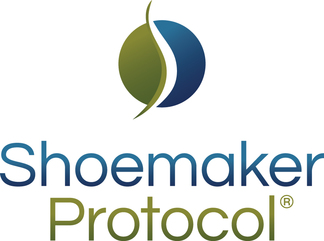10/21/2019 - Safety of influenza vaccine
Should CIRS patients received the influenza vaccine?
This question is actually more complicated than it might appear. The incidence of cytokine-mediated adverse events following flu vaccination of just about any kind, including quadrivalent vaccine, will show that about 25% of patients will have systemic adverse events. These can be graded as mild, moderate or severe with injection site and other adverse events being 83% mild, 25% moderate and <1% for severe.
The idea of a vaccine is to generate an antibody response that will be available should the host be challenged with the organisms that the vaccination is suppose to prevent. We want antibody formation!
The problem is that if we have particular HLA’s, especially 4-3-53 and 11-3-52B, there is demonstrably a significant increase a relative risk for inflammatory conditions in part due to abnormalities of antigen presentation. Even worse, as shown by Dr. James Ryan, is that suppression of CD3D or CD48 (both of these CD tests can be determined by GENIE) also plays a role. If these CD’s are suppressed, defective antigen presentation at the T-cell synapse/dendritic cell is essentially guaranteed. If both of these are positive, then there should be no impediment to normal antibody production following antigen presentation.
If there is evidence of known conditions for which influenza vaccines makes good sense, such as those with diabetes, heart disease, hypertension, neurologic disorder, pregnancy or young children, then presence of CIRS alone, but without 4-3-53 or 11-3-52B, is not a bar to vaccination. If the likelihood of problems with systemic symptoms is greater than 25%, as it is anecdotally in 4-3-53 and 11-3-52B, then the patient needs to make a decision arbitrarily. There are no data that we can cite or those found in the literature that will say vaccination is <25% for those with those haplotypes.
As far as the Guillain-Barre syndrome goes, the problems with swine flu vaccine in 1976 are still regarded as being an outlier in that there has been no repeat of Guillain-Barre similar to what we saw back in 1976. The bump in Guillain-Barre in 1992-1993 and 1993-1994 generated a lot of publicity but statistically there were no evidences of the risk of the vaccine associated with Guillain-Barre.
If the person is a non-smoker and doesn’t have known disease-based risk factors separate from CIRS, the presence of CIRS is not known if it creates a condition of increased risk of adverse events is predictable.
1. Wilkinson K, Wei Y, Szwajcer A, Rabbani R, Zarychanski R, Abou-Setta A, Mahmud S. Efficacy and safety of high-dose influenza vaccine in elderly adults: A systematic review and meta-analysis. Vaccine 2017; 35: 2775-2780.
2. Yamazaki S, Fujiwara M, Inoue C, Watanabe M, Takayanagi S, Taniguchi T, Watanabe A, Ishiwade N, Igari H. Adverse events after the introduction of quadrivalent influenza vaccine in comparison with AH1pdm vaccine (2009) in Japan. Yakaugaku Zasshi 2019; 139: 469-474.
3. Watanabe A. Evidence of indications of influenza vaccine and its efficacy including Guillain-Barre syndrome as an adverse reaction. Nihon Rinsho 2003; 61: 1987-91.
4. Lasky T, Terracciano G, Magder L, Koski C, Ballesteros M, Nash D, Clark S, Haber P, Stolley P, Schonberger L, Chen R. The Guillain-Barre syndrome and the 1992-1993 and 1993-1994 influenza vaccines. NEJM 1998; 339: 1797-802
Featured Resources
Member Q&A January 2025
Member Q&A January 2025
Member Q&A December 15, 2024
Member Q&A December 15, 2024 Holidays, New Homes, and Air Purifiers
Member Q&A December 1, 20224
Member Q&A December 1, 2024 VIP, CSM, and more
Member Q&A November 16, 2024
Member Q&A inlcuing Pets, UV Light, and more

 The Membership Q&A Library
The Membership Q&A Library


